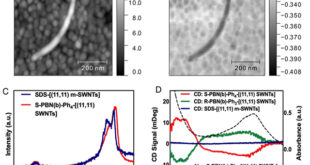Significance
Greenhouse gases are responsible for the current global weather amplification dubbed climate change. This has contributed to global awareness of the effects of pollution, specifically, the atmosphere, by carbon dioxide (CO2) gas. Emission of carbon dioxide, the main culprit responsible for global temperature rise, can be counter-checked by carbon capture and storage (CCS), carbon sequestration, and reduction of fossil fuels usage-among other feasible techniques. The CCS approach involves sequestration of carbon in deep brine aquifers, exhausted oil and gas reservoirs or unworkable seams. The latter is an efficient method with benefits in two folds; the most significant one being the improvement of recovery of trapped methane gas.
Much attention has been paid to the CO2 supercritical (Sc) state ECBM process (the technology for the replacement and displacement of methane by supercritical CO2) as it facilitates realization of the aforementioned benefits. Unfortunately, the Sc-CO2-ECBM technology is still in its infancy stage and therefore still demands perfection of both experimental simulation and theoretical studies normally employed during various studies.
Recently, China University of Mining and Technology researchers Shuxun Sang, Huihuang Fang, Shiqi Liu and Shupei Liu reported a study where they developed experimental simulations under varying temperatures, injected pressures and confining pressures, with the focus being to simulate the Sc-CO2-ECBM process effectively. In particular, they aspired that their approach would help resolve the ambiguity clouding the replacement and displacement effect that occur during the Sc-CO2-ECBM process and their contributions. Their work is currently published in the research journal, International Journal of Greenhouse Gas Control.
To begin with, experimental simulations of the Sc-CO2-ECBM process were carried out under different temperatures, injected pressures and confining pressures. Next, the differences in replacement and displacement efficiency and the equivalent percentage of replacement and displacement time between samples were analyzed. Finally, the influences of the pore network model on the difference in the replacement and displacement effects, the stage division and its difference of the replacement and displacement effects, and the project design of collaborative optimization of Sc-CO2 storage and ECBM were investigated.
The authors reported that the injected pressure, confining pressure and temperature were the key factors affecting the replacement and displacement efficiency. In addition, they found out that the pore network model and its characteristic parameters could explain that the replacement and displacement effects were more successful in the SH sample than that in the YW sample (SH, YH-experimental samples collected for study purposes from coal mines in China).
Indeed the scientists at China University of Mining and Technology successfully presented excellent simulation of the Sc-CO2-ECBM process under various conditions. Generally, their approach involved the analysis of the differences in the replacement and displacement efficiency and equivalent percentage of replacement and displacement time of the Sc-CO2-ECBM process between samples. Altogether, the results presented based on the experimental simulations of the Sc-CO2-ECBM process could further promote the implementation of the CO2-ECBM project in deep coal seams.

Reference
Huihuang Fang, Shuxun Sang, Shiqi Liu, Shupei Liu. Experimental simulation of replacing and displacing CH4 by injecting supercritical CO2 and its geological significance. International Journal of Greenhouse Gas Control, volume 81 (2019) page 115–125.
Go To International Journal of Greenhouse Gas Control Advances in Engineering Advances in Engineering features breaking research judged by Advances in Engineering advisory team to be of key importance in the Engineering field. Papers are selected from over 10,000 published each week from most peer reviewed journals.
Advances in Engineering Advances in Engineering features breaking research judged by Advances in Engineering advisory team to be of key importance in the Engineering field. Papers are selected from over 10,000 published each week from most peer reviewed journals.



